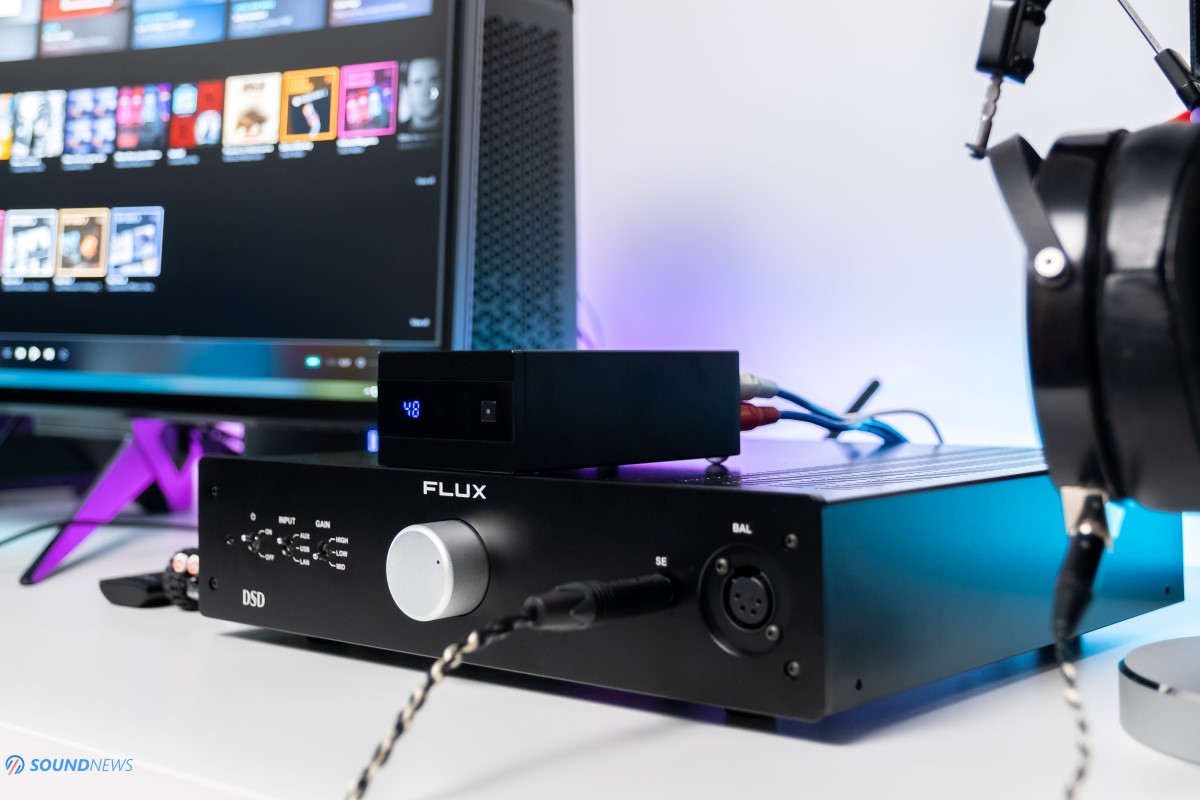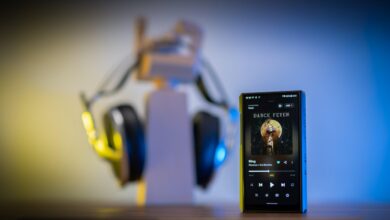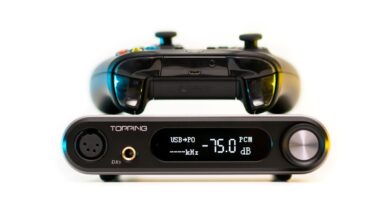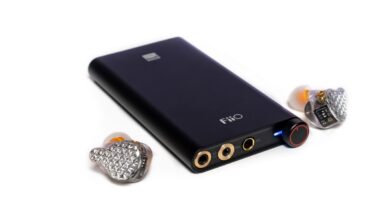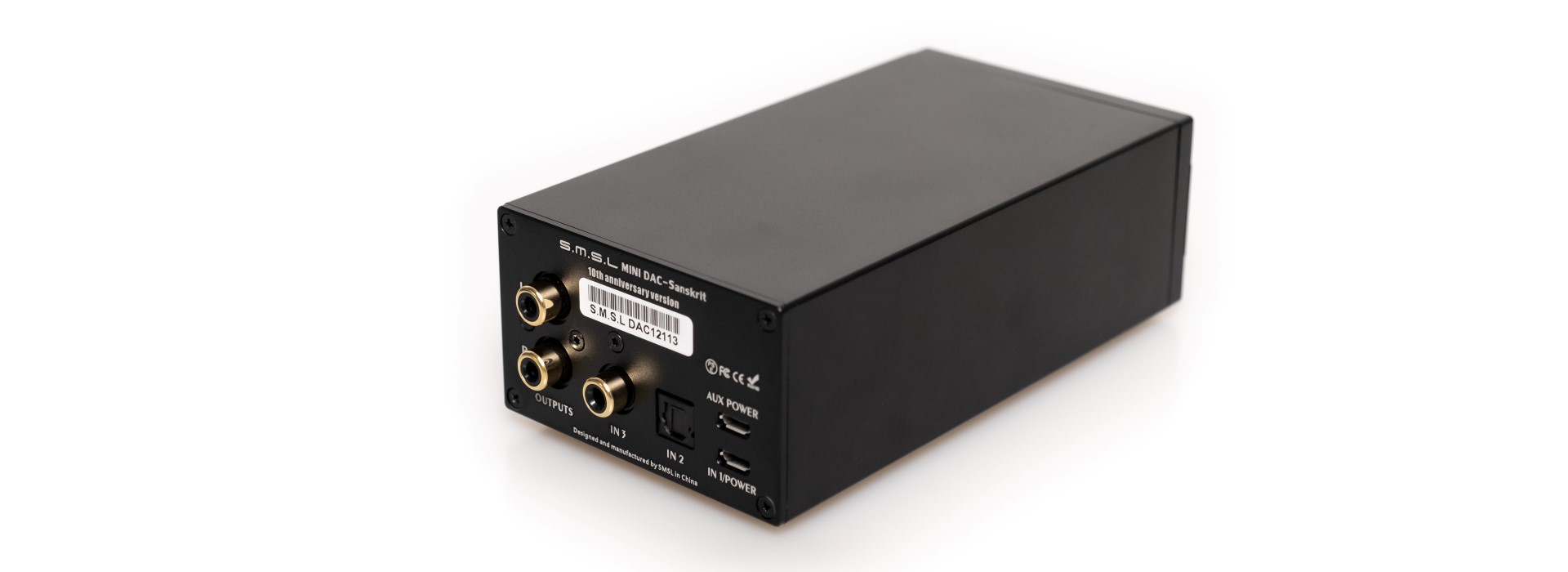
My Video Review:
SMSL Audio might sound like a fairly new brand in the West, but for the East market SMSL just celebrated its 10th Anniversary and yet it feels just like a prologue for a long journey ahead for them. As a lot of brands from the land of the red dragon, SMSL is focused mostly on releasing affordable audio products catering to young audiophiles and to the ones that seek the best bang for the buck. SMSL is releasing so many products on a monthly basis that we lost track and every time I open their webpage; I see at least 2 or 3 new products being released and that always tells a story about who they are as a company and how much they want to be recognized on a global scale. I like quite a lot that SMSL is not copying anyone when it comes to design and the moment I’m seeing that elongated “container or wagon like” look at a freshly released device, I know its from SMSL. I do not particularly like some design decisions they make, but in the same time I appreciate the bravery of thinking different than others. I will be testing today an entry-level DAC from them that just been upgraded to Mark II or Version 2 as they are stating on the package. SMSL called it Sanskrit which means refined, consecrated and sanctified in the classical language or should I say liturgical language of Hinduism – which directly impacted most of the languages we speak today. When you say it out loud, it seems like a long model name, so I decided simply calling it Mark II from now on, just to save a few words.
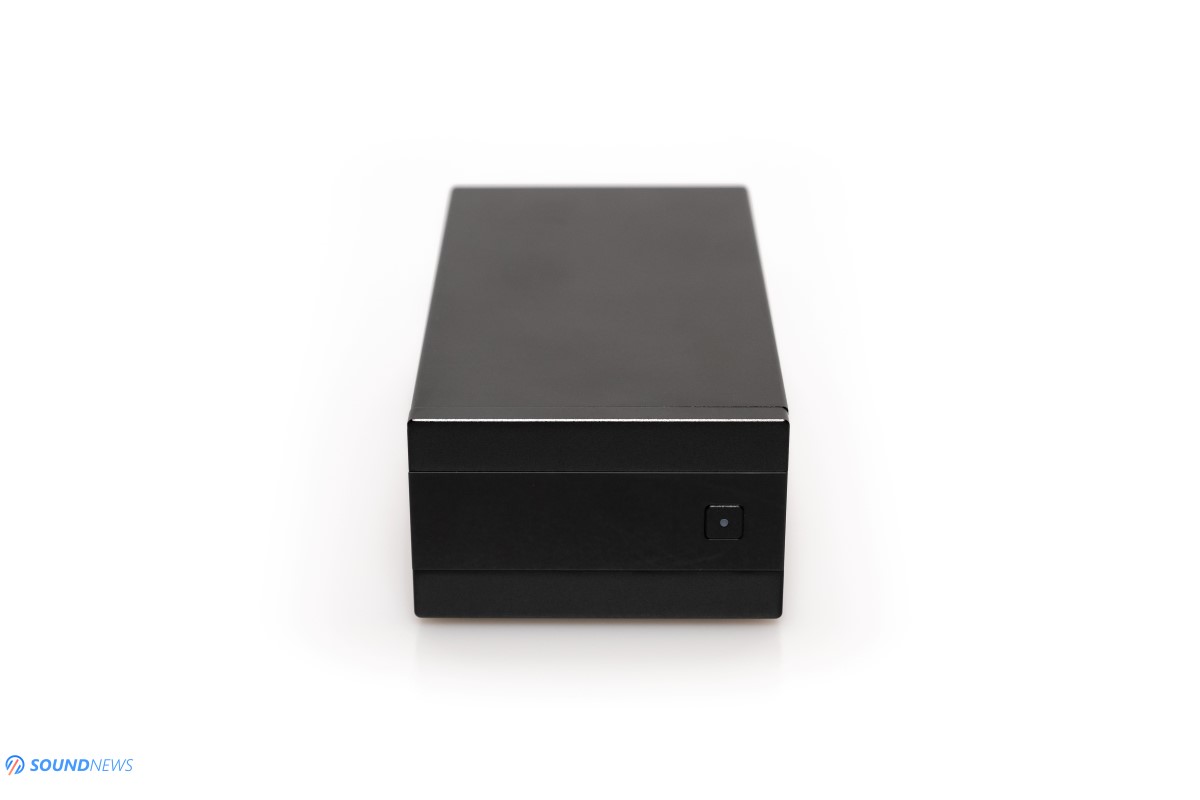
Unboxing & Package Contents
It came in a small box, very reminiscent to that of Topping E30, there is lots of black foam for protection. The internal space was used in a clever way, maximizing the use of every square inch in there. Upon opening the package you’ll spot the unit itself, 8 transparent silicone feet, two Hi-Res Audio stickers, an after-sales service card and a user manual. There is a single USB type A to micro-USB cable in there too which will transmit the USB signal and power for the unit. Compared to say an E30 from Topping, only a single cable is needed for it to work, so SMSL didn’t include a secondary cable. If you’ll want to power it by an external power bank, you will need to use your own micro-USB cable. SMSL also included a simple remote which should work great in the living room. I strongly recommend checking the user manual first, just to learn how to enable the remote, there are few additional tricks in there too.
Design & Build Quality
When it comes to the build quality, I have really nothing to reproach. SMSL used a thick metal sheet for the front panel, it aligns perfectly with the rest of its metal case. It is free of any screws on any side as SMSL moved them on the back plate for a much cleaner look.
As with most devices made my SMSL, you can choose for a black, red or blue color scheme, you can match it with the rest of your SMSL gear but I still think the black one looks the best as it doesn’t attract a lot of attention to it.
When it comes to design, my opinion shifts to the opposite camp, I find it odd looking and not that easy to match with other units, especially when every other audio component is looking very wide and not that deep. On the plus side, it is really small and will not attract a lot of eyes to it, especial the black unit looks quite stealthy. Do note that the PCB was designed this way, following the same design language of the M line (M100, M300 and M500) so it was natural for it having the same elongated body.
It also spots a simple LCD screen that by default with show the sampling rate of your music, it can even be dimmed for a complete stealth look which I quite enjoy especially when listening in the evening.

Controls & Connectivity
On the front plate there is a single button that has multiple functions: a simple press will turn it on and a long press will turn it off. Once it is powered, a short press will switch between 3 digital inputs, IN1 being USB, IN2 is optical and IN3 is the coaxial input. The rest of its features can be accessed only by using the included remote control. With it, you can select the desired volume level in 40 steps, you can select from 6 digital filters that are working on the hardware level of the AK4493 DAC chip. You can also mute it and dim the display. It is important to know that the remote will start working only after pressing the C button on it– control button.
On its back you will find those 3 digital inputs, I’m a little bit letdown by the micro-USB connector, would love a regular USB type-B input so I can use fancier USB cables or a Type-C input so I can use my smartphone cable with an external power bank. It offers a pair of RCA outputs that at maximum volume will offer about 2.2V RMS of signal power. Since it offers 40 steps, you can use it as a DAC + digital preamp if you please.
Tech Specs & Detailed Information
SMSL went with the newest generation of silicon from Asahi Kasei. I’m super glad they ditched that mediocre sounding AK4452 that is powering their entry-level M100 DAC and went with a much better one, part of the Premium line of digital to analog converters: the AK4493 that is containing some of that mambo-jumbo also called as Velvet Sound Technology – that tames a bit the top-end and infuses a bit more life in the midrange department compared to say an ESS Sabre design.
The USB input is being handled by a high-performance XMOS chipset, the second generation XUF208 that is helping the unit at receiving and decoding natively PCM material up to 32-bit 768 kHz and DSD up to DSD256. This particular chipset is an ultra-low powered silicon that can even accept signals directly from your smartphone, tablet and laptop. Basically, transforming your smartphone into a digital transport where MKII will take care of all the decoding and heavy lifting.
SMSL included 2 NDK ultra-low noise crystal clocks to increase precision for a wider sampling rate, they also included some pretty good voltage regulators but sadly only for the USB input plus few capacitors storing some of that power for a good transient response and dynamics.
The output stage seems to be made out of two op-amps and some low-noise discrete resistors which is always a good sign to spot in such an affordable unit. The coaxial and optical input chips are not specified and those two digital inputs seems to be avoiding that voltage regulator that was developed for the USB input, so I would not be very surprised to hear it performing slightly behind on coaxial and optical compared to the USB input. Besides that, only USB can handle DSD and 32-bit PCM files, so it is clear that USB is the recommended digital input.
There is one cool feature that I found by chance, once you flip the unit 90 or 180 degrees, the display will flip accordingly too, meaning they put an accelerometer that will detect tilt to determine movement and exact orientation along three axes. You can glue those 4 silicone feet on any side you want to be the underside of this unit, quite interesting.
Let’s get to the most interesting part of the review, shall we?
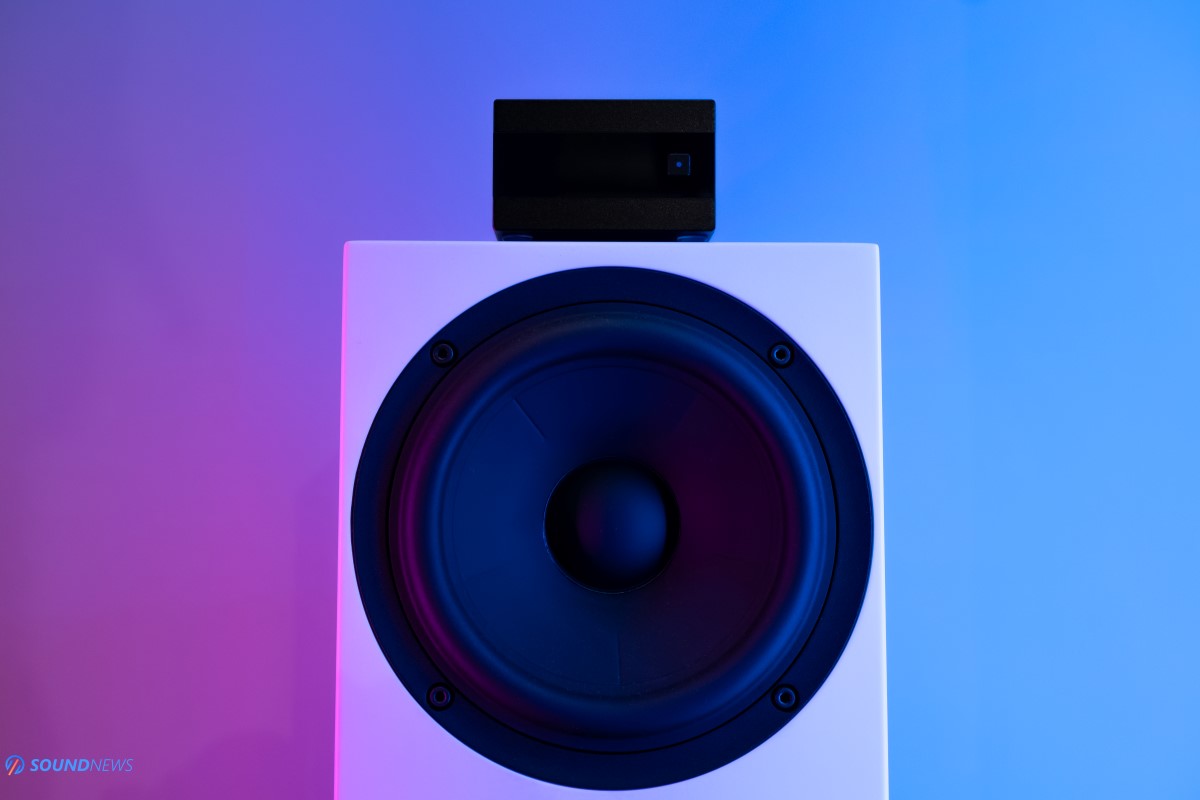
Sound Performance
I. Preliminary impressions
Seeing that it can also be powered by an external power source, I really thought that it might benefit greatly from an external power supply like a smartphone charger, than connected directly to a PC or laptop and an external power bank should sound even better than that. As usual, I connected it first to the front USB ports of my PC and to my surprise it sounded damn fine. Even with my ultra-sensitive IEMs, the background noise is lower compared to the Topping E30 that I tested one week before. Moving to the rear USB ports I expected a serious improvement, I was surprised to hear absolutely the same clean background with absolute silence between tracks as it was the case with the frontal USB ports.
It was quite a challenge finding a second micro-USB cable laying around, since I’m not using those anymore and SMSL sadly didn’t put another cable in the package. I finally found one and connected it to an external power bank, it sounded absolutely the same compared to the USB ports of my PC so I’m pretty sure those voltage regulators and USB filtering works really good and even slightly better than the pricier Topping E30!
This is great news, since you’ll have the best sound out of it connected to any USB power source and you will not be sent to an endless quest on finding the best power source for it, as it was the case with Topping E30 and D50S.
Warning: If you still plan on using it with an external power source or power bank, make sure it outputs exactly 5V, otherwise it might permanently damage the unit or even worse cause a fire.
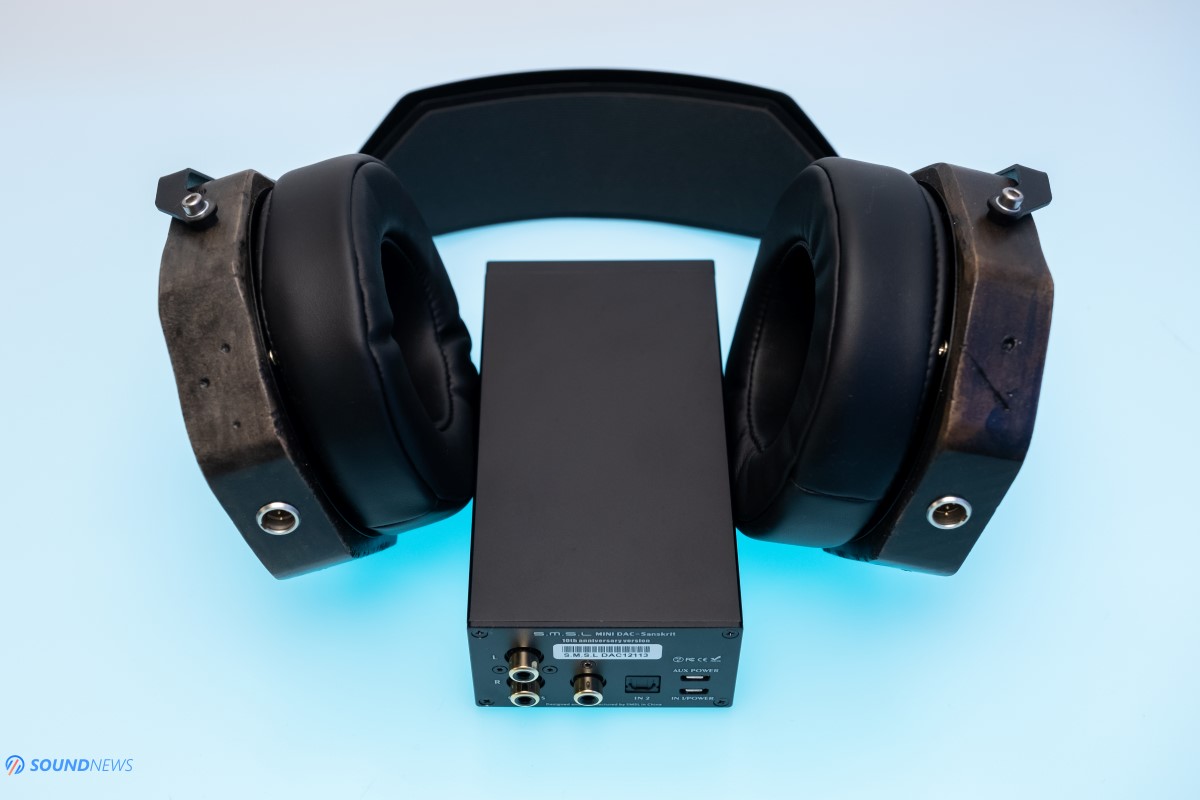
II. Sound Signature & Timbre
I’m listening to it for about 8 days now but in all fairness, it sounded absolutely the same from the first moment I pressed play. It doesn’t need long burn-in hours as it houses just two electrolytic caps and few tiny ones which in about one hour will give the best they can offer.
I fired the latest album of The Strokes – The New Abnormal (Tidal / Spotify) that just calls me every day to listen not only with my headphones but also with the speaker setup. I find this album mighty impressive in terms technicalities and I was quite surprised that SMSL unit was capable of playing it in a super engaging way. Background was very clean and there was an absolute silence with my speakers, with IEMs and with big desktop headphones. Timbre was on the warmer side than usual (by usual I’m referring to Matrix Audio Element X), there was definitely a warmer and a smoother midrange, the engagement factor was unbelievable good. I can clearly distinguish a bad sounding source from a good sounding source and MKII is far from bad sounding. In all honesty, it has all the best traits a great digital to analog converter should have.
- A faster transient response to counterbalance some of the slower amplifiers and transducers? Check!
- A fairly neutral frequency response without serious roll-offs at both ends? Check!
- Spread-out stage and a deep presentation so I could easily point out where everything is located? Check!
- Good detail retrieval and transparency that could show the best or the worst in your records? Check!
- High engagement factor with an instant rise of dynamics? Yes, a lot of that!
The MKII is sounding really mighty fine, I can’t quite believe I’m still listening to an $109 DAC that could easily outperform some digital to analog converters released years ago at ten time its price.
So, let’s dive deep into everything SMSL Sanskrit 10th MKII is capable of and try finding the needle (some cons) in the haystack.

III. Soundstage & Depth
It’s not a secret anymore that most of the AKM designs are known for their ability to throw a bigger stage and increase the void space between the notes. I’m yet to hear an up-front or muddy sounding AKM based DAC and SMSL unit is really no different to that description.
Of course, it depends on many things how the end result will perform and how a DAC will sound, but I’m pleased to report that MKII surprised the hell out of me with its performance on all fronts considering its price point. I was the most impressed by the soundstage size and how deep some of the notes can go with it. From my past experiences, the soundstage size and depth are directly tied to how good is the output stage and how good is the power filtering. As a general rule of thumb, all DACs with oversized power supplies did posses the most holographic, the most 3D and open wide soundstage. Take the Denafrips Venus as a really good example – it has an oversized power supply, an out of the head experience with headphones and notes coming from weird angles while listening to speakers. MKII is super small, lacks a transformer of any kind and is being power by the USB bus plus some clever tinkering that purifies that signal. I experienced the same wizardry with the Topping E30 unit as both are sounding quite wide, much bigger than their size might suggest and both are quite proud about their achievements in terms of scale. I don’t know exactly what is causing this, maybe the newest generation of AKM chips are less sensitive about clean power and don’t need huge power reserves as others might need.
In terms of how big this small unit can sound, think about the widest sounding ESS Sabre designs and SMSL is sounding exactly like those, at any price point. It sounds almost as open and wide as the $3000 Matrix Audio Element X. I’m seriously amazed where digital audio is going these days, years ago I would never believe an entry-level digital source would be capable of this kind of performance.
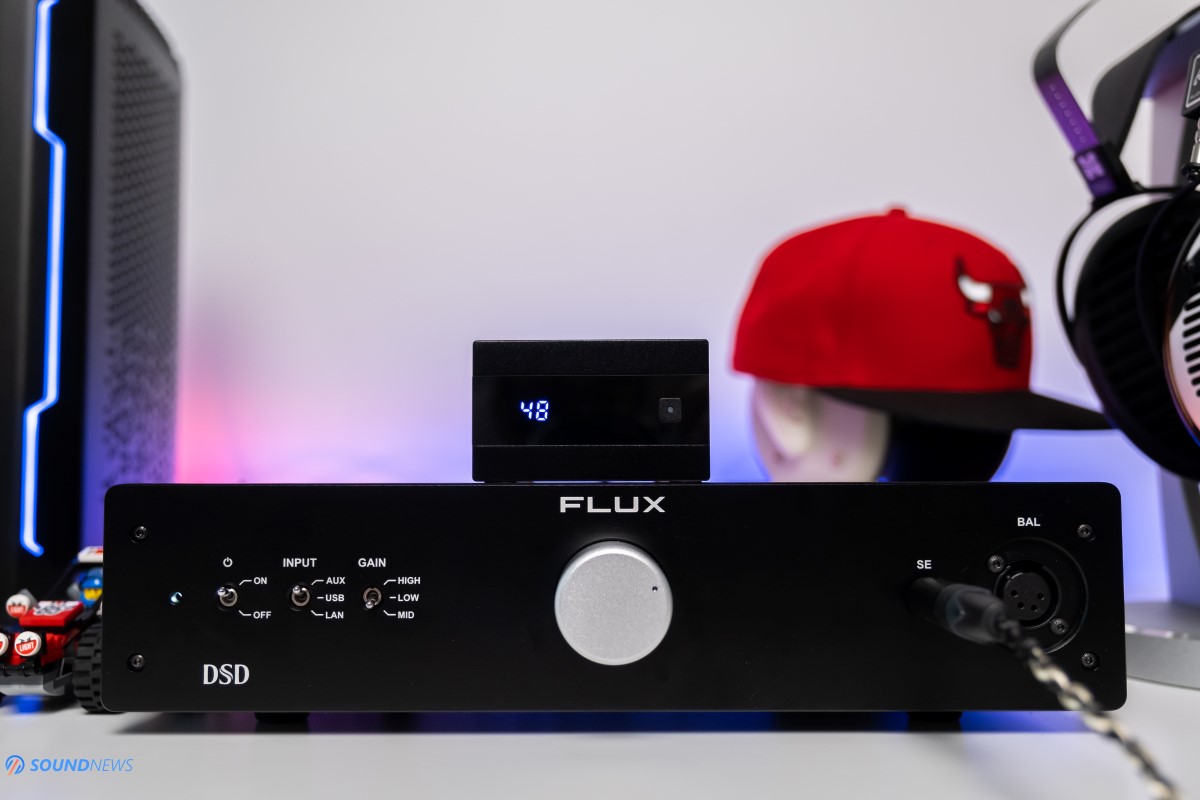
IV. Transparency & Detail Retrieval
Taking into consideration that clean background and that open wide sound, I was already expecting to hear transparency on a higher level. Even listening to lower quality recordings, I was able to walk through them and be surrounded by music in a very pleasant way. SMSL unit is showing a great transparency and good detail retrieval and it’s doing it in a very casual way without stressing itself too much, nor the listener. It is not really forcing the listener on searching for tiny details and for the ultimate micro-detail you should look elsewhere as this unit was not made for that.
Nonetheless, most of them can be spotted here and there, even few mastering errors are there too. I observed that the E30 from Topping had the same trait of showing only the good parts of the recoding, it is somehow hiding the hissing, the grain and the harshness which is exactly what a true music-lover is wanting from its tunes, don’t you think?
I re-listened to music I used in my Topping E30 review, mostly because a comparison between the two is mandatory and because some of it is actually pretty amazing. Listening to The Strokes, I experienced the same feelings as with E30, this particular album plays really well with the positioning of all sounds around the listener and SMSL unit played that so well, the engagement factor was high, everything sounded clean and the rise in dynamics was felt instantly.
Listening to mediocre mastered music like Soul Asylum – Hurry Up and Wait (Tidal / Spotify) released just 4 days ago, I immediately felt a decrease in dynamics, a roll-off in the upper treble and even in the sub-bass department, I felt absolutely the same with other pricier digital sources. I want to point out that SMSL unit can easily differentiate from good to bad mastered albums and with the right set of transducers that task becomes a piece of cake even for casual listeners.
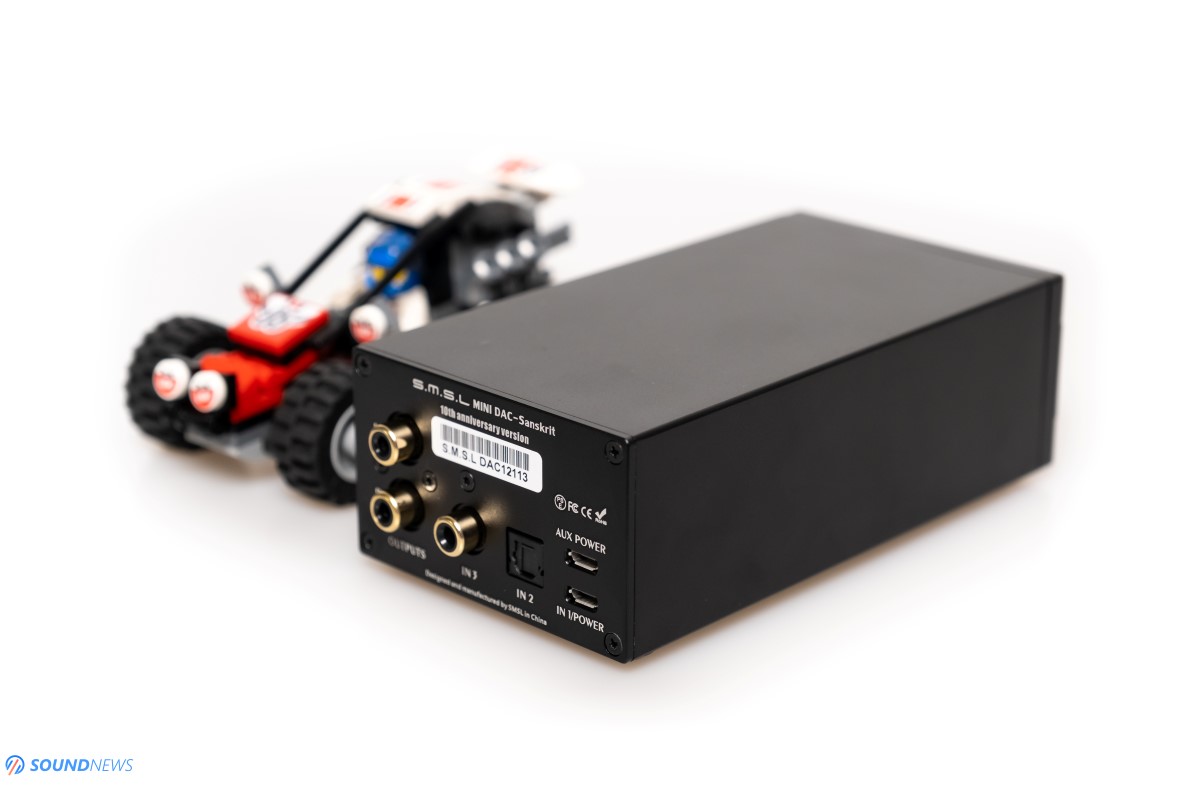
V. Transient Response
I paired it mostly with Flux Lab Acoustics FCN-10, with Benchmark HPA4 and with KECES S125 in the speaker setup. The most interesting pairing to me was with FCN-10 as I experienced such a slam and kick into my ear-drums that I needed to re-check my listening volume with MiniDSP E.A.R.S system. Slam increased to unrecognizable and the control of the headphone drivers was simply the best I encountered with the big cans. FCN-10 sounds almost exactly like this from its internal DAC section, proving that the SMSL unit is punching way above its price point. When I used the SMSL unit in different audio rigs, I liked that it didn’t alter the nature of the amplifiers that followed and stayed very close to the source material.
I’m quite into fast and engaging music and most of it represents me, I’m using it to increase my mood level in difficult times like these. For me it works like a charm, if there is a catchy riff and a nice chorus, I will definitely tap my feet and it happened so many times with this one. It is capable of increasing or decreasing the speed of the air mass moving towards me. All my electronic and rock music sounded fresh, really punchy, carrying just the right amount of kick. I experienced the same with the speaker setup. I will mention that its preamp section works decent enough, but it can’t replace a dedicated high-voltage preamp like Benchmark HPA4 for example. The kick out of the Buchardt S400 was nice, I was losing only the ultimate thump in the chest that HPA4 is providing but everything else was there and I couldn’t complain too much about its performance even with speakers.
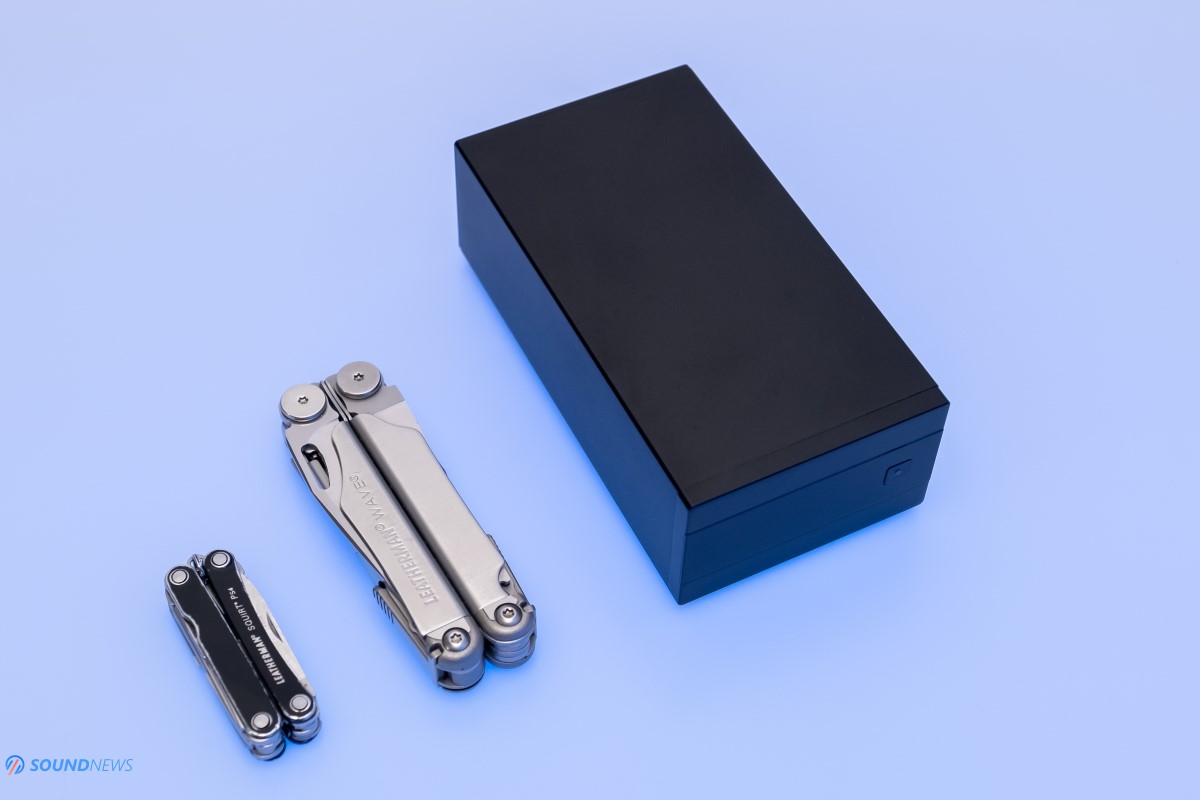
VI. Frequency Response
Even from the first minutes of Infected Mushroom – More Than Just A Name (Tidal / Spotify), it was clear to me that this one wants to play with bigger boys when it comes to sub-bass performance. No Line in MIDI track went really down in the frequency region and had an impressive delivery and in terms of speed and thump. This album can sound a bit weird with few particular sources (mostly R-2R ones), but on SMSL bass notes sounded clean, super-fast, very outlined, always technical to a point that I could easily mistake it with some pricier DACs. Sub-bass is rendered fine, it still doesn’t have the same sustain as the best DACs I’ve tried, but I do find it really good and better than I expected.
Mid-bass performance is slightly better to a point of being the star of the show while listening to any electronic music. It’s linear, I don’t find it overdone, it has the perfect dose of clarity and impact into the chest. Again, it sounds undistorted even going past my comfortable listening level which is always a good sign for an affordable DAC.
Midrange is clearly the best part of this unit and no matter the song is being played, MKII will always adds just a tiny bit of its personality and from boring and linear, most of the tunes will start sounding a bit warmer, smoother in a way, voices will sound deeper and will have a natural texture to them. Any of the acoustic instruments will have a life-life tone and will decay a bit longer to create a complete relaxation of body and mind. If you search for an ultra-linear and ultra-revealing DAC, this is definitely not for you, but if you are searching for a digital source that tries to put you into a relaxed state, increasing the enjoyment level, then this is definitely for you. There are not a lot of DACs to which I can attribute words as natural, warm and smooth, but MKII with its special midrange treatment is shifting its tonal balance a bit and attracts all the surrounding ears exactly in this area.
Treble is good and there is a decent amount of detail, even top octave can be spotted with good speakers and headphones. However, the spot light is never put in this region. There is a slight roll-off in the upper region that will chase away any brightness and any digitus. The outline or texture of all of the sounds in the treble area is a blurred a bit, so the cymbals and snares are not super defined and don’t have any sharpness to them. It’s like applying a smoothing filter over the treble region. However, I will state again that detail is not smeared, speed in not affected too so even double drums have a good attack, a fast decay and are sounding snappy and engaging most of the time.
The tonal balance shifted towards musicality, there isn’t any listening fatigue even after having a listening marathon as I am doing for few hours. I really like what it is doing to linear and honest sounding amplifiers and the same can be said about speakers and headphones.

VII. A comparison
SMSL Sanskrit 10th MKII ($109) VS Topping E30 ($129.99)
In terms of build quality, both have sturdy metal cases, the I/O is the same on both units. They both offer the same DAC or DAC + preamp feature. Both can be used with a wider variety of devices like TVs, gaming consoles, receivers, smartphones, laptops and PCs. I do slightly prefer the build of the E30, because of its bigger LCD screen, it shows more information on it too, I do love that it has the USB type-B on the back in detriment of micro-USB on MKII. I do like the shape a bit more on E30, but all of this is nitpicking since the build quality is identical on both units and how they look might not be that important to someone.
In terms of tech specs, both are more alike than different, carrying the same DAC chip, the same USB chip, not sure about the SPDIF chip. There is a slight difference between them, E30 is having 3 crystal clocks, I will throw a wild guess that the third one was put only for DSD material, MKII has only 2 crystal clocks. On the plus side for MKII, it sounds bloody amazing with any USB power source, E30 is more sensitive to dirty USB ports as it was my case and E30 sounded clearly better with an external power source.
I first started volume matching them and observed that at maximum volume, MKII is by 0.4 dB louder and after further inspection I found the culprit. E30 seems to be outputting 2.1 V RMS on RCA and MKII is outputting 2.2 V RMS, hence slightly louder output. I don’t think human brain can differentiate a 0.4 dB change in volume but nonetheless, I volume matched them to exactly 85 dB using the MiniDSP EARS and the Benchmark HPA4. I wanted to completely eliminate the room acoustics (I’m still working on that) so the listening tests were done using the Audeze LCD-4 and the Hifiman Arya.
MKII has a slightly darker background if I am using the rear USB ports of my PC, as a direct result the transparency is increasing and so is the detail. If I move E30 to an external power bank then E30 takes the lead by a very small percent. Frequency response and timbre is absolutely the same on both units, I am experiencing the same engagement factor, the same soul-grabbing midrange and the same relaxed treble response. Transient response is absolutely the same and so is the soundstage size and depth information.
I listened to some DSD files via JRiver and the game changed a bit in favor of E30 – it shown a better accuracy and slightly better transparency and texture of the notes. I believe the 3rd crystal clock of E30 is helping it in achieving a better performance on DSD material.
Apart from that, both units are sounding very close to each other to a point that I can’t differentiate them on regular music (PCM). The only difference I can spot is by connecting them to the USB port of my PC where E30 is showing a slight grayness in the background or listening to DSD material where E30 is gaining momentum. Everything else is identical on both units and they are more alike than different really. SMSL unit is by 20 bucks cheaper than the E30, making it an absolute steal for the money!
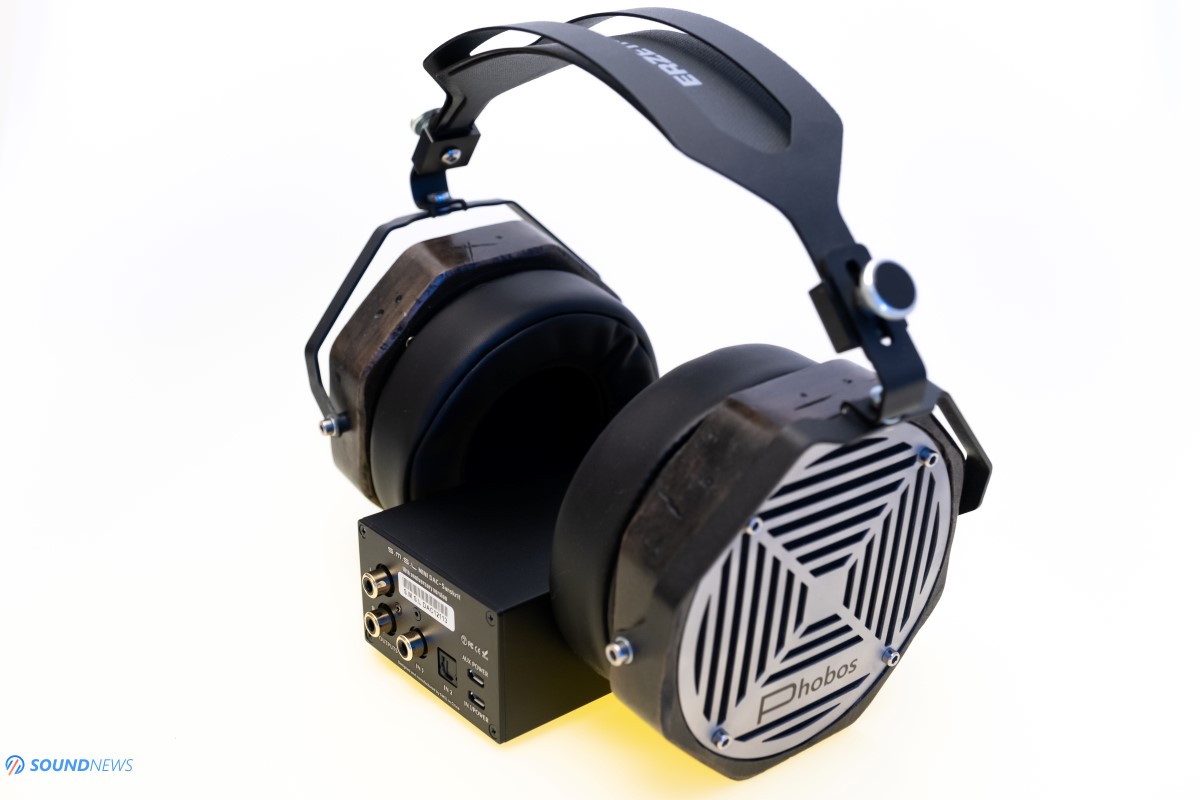
Conclusion
SMSL have an absolute winner on their hands, I urge you not going for their M100 DAC and instead going with this one that is performing on a much higher level. SMSL responded accordingly to its competition and I believe that MKII is performing way above its price point. I liked it a lot more than most of the DAPs that can work as DACs and I even liked it more than some pricier DACs that I have tested one year ago.
Sanskrit 10th MKII has a solid build quality, an odd shape but an amazing sound quality attached to it. It has a great tonal balance and works great with linear and bright sounding gear. If you are on a quest to find a musical and an open wide sounding DAC at the price of a nice meal in the city, then this is very good choice and a really good starting point for any music lover.
At just $109, SMSL Sanskrit 10th MKII is currently the best value I know when it comes to good sounding digital sources and I will surely recommend it for the newcomers asking for guidance. The review unit was kindly provided by SMSL-Topping, you can buy it from their web-store by following this Link. (This is an affiliate link that is helping us in maintaining this website at no additional cost to you).
PROS:
- Solid build quality
- Easy integration into tiny spaces
- The remote is helping a lot in a speaker setup
- Excellent tonal balance, being tilted towards warmth and naturalness
- Transparency is at a very high level and detail retrieval is above decent
- Pretty good pin-point imaging
- Open and wide soundstage, amazing depth too
- Good speed and control
- Amazing mid-bass and midrange level
- If you are hunting for the best value – then this is probably it
CONS:
- Rolled-off a bit in the treble
- Aging micro-USB ports and that odd shape is not for everyone
ASSOCIATED EQUIPMENT:
- Sources: Xiaomi Mi 9T Pro, Corsair One i160
- DACs: SMSL Sanskrit 10th MKII, Topping E30, Flux Lab Acoustics FCN-10, Denafrips Venus, Matrix Audio Element X, Burson Conductor 3 Reference
- Headphone Amps: SparkoS Labs Aries, Benchmark HPA4, Flux Lab Acoustics FCN-10, xDuoo TA-30, Burson Conductor 3 Reference
- Integrated Amps: Hegel H190, KECES E40
- Power Amp: KECES S125
- IEMs: FiiO FH7 & some lower tiered ones
- Portable headphones: Sennheiser Momentum 2, Meze 99 Classics
- Full-sized headphones: Audeze LCD-4, Erzetich Phobos, Hifiman Arya, Quad ERA-1
- Loudspeakers: Buchardt S400, KEF LS50W
- Interconnects: QED Reference (x2), Aune AL3
- Speaker cables: Kimber PR8, Audioquest Type4
- Power Cables: Isotek EVO3 Premier (x2)
- Balanced Isolation Power Conditioners: PLiXiR Elite BAC400, KECES BP-600
